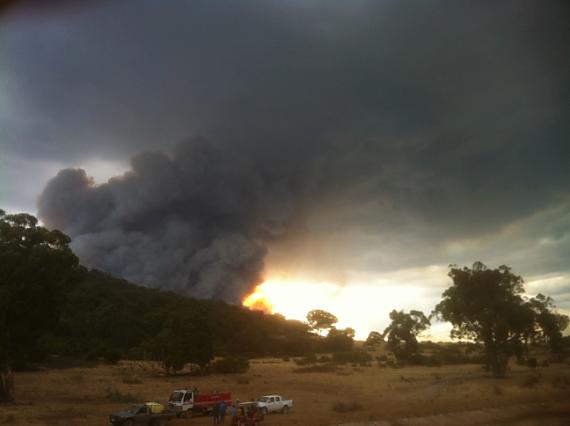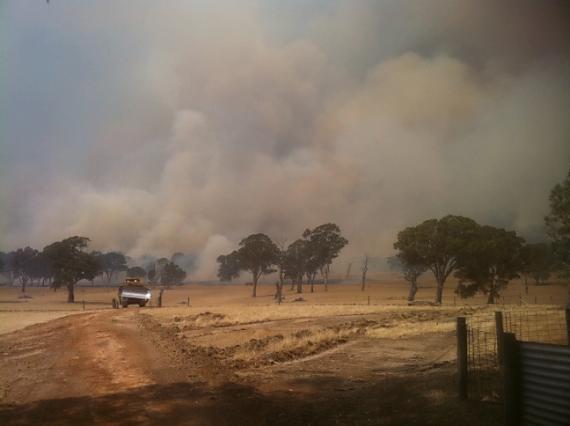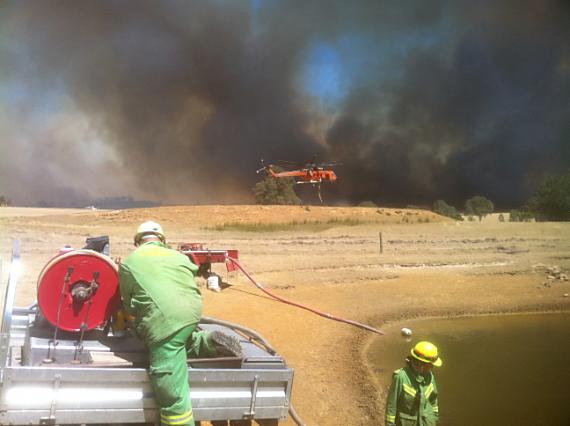Officials of Australia’s Rural Fire Service are saying that hundreds of homes may have burned in southeast Australia as more than 100 fires burned in New South Wales (NSW), with 36 still uncontained.
Teams will be assessing damage from #nswfires today. It appears there may be hundreds of homes destroyed. #nswrfs
— NSW RFS (@NSWRFS) October 17, 2013
The NSW premier, Barry O’Farrell, said that it would be a miracle if there was no loss of life. Australia’s national science agency, CSIRO, warned that several people were likely to have been killed if the estimate of hundreds of properties destroyed proved to be true, as historically an average of one life has been lost for every 17 houses.
These fires are following an unusually early start to the Australian fire season last month, well ahead of their summer which normally reintroduces fires to the landscape.
One of the fires spread from Lithgow towards the Blue Mountains, running more than 25km (15 miles) and burning over 20,000 hectares (50,000 acres) of bushland.
Amazing photo of just one of the bush fires burning in NSW, #Australia pic.twitter.com/WE9LQPylGW
— metal dad australia (@Metaldad555666) October 17, 2013
ABC News in Australia has an excellent video report about the fires.
‘This is as bad as it gets’ Bush fires in NSW Australia http://t.co/djtZn0G7Ho pic.twitter.com/yNbHl3n9IC
— Capital Climate (@capital_climate) October 17, 2013








